Key takeaways
- Debit cards allow you to make purchases using money directly from your bank account.
- Debit Mastercard and Visa Debit cards are debit cards that you can use online or over the phone.
- You can get a debit card by signing up for almost any chequing account in Canada.
What is a debit card?
Debit cards (also called client cards or bank cards) are payment cards issued by your bank to give you access to your chequing or savings accounts. You can use debit cards for in-store purchases and ATM withdrawals in Canada or internationally. If you have a Visa Debit card or Debit Mastercard card, you can also use your card to make purchases online.
Debit cards only allow you access to your account balance, unless you have overdraft protection, which lets you dip into a negative balance (usually for a fee). If you want access to money that is not in your account, consider a credit card instead.
What bank accounts can you link to your debit card?
You can link almost any everyday bank account to a debit card as long as those accounts are from the same bank that issued the debit card. You can typically link both savings or a chequing accounts. The account needs to be a Canadian account and must be in the same name as it appears on the card. It can also be a joint account.
Compare debit cards with these bank accounts
Finder Score for chequing accounts
To make comparing even easier we came up with the Finder Score. Welcome offers, account fees and features across 60+ chequing accounts and 25+ lenders are all weighted and scaled to produce a score out of 10. The higher the score the better the account - simple.
How do Visa Debit and Debit Mastercard cards work?
Visa Debit cards and Debit Mastercards work like any other debit card, giving you access to the money from your chequing account. The advantage of Visa Debit and Debit Mastercard cards is that, unlike traditional debit cards, they allow you to make online and phone purchases like you can with credit cards.
They don’t give you access to credit, but they do come with a card number, expiry date and CVV number. The best debit cards in Canada, including many of the cards listed here, will come with this functionality.
Do debit cards have a CVV?
Yes, most debit cards in Canada have a Card Verification Value (CVV) code, which can also be known as a card verification code (CVC). This number acts as an additional security step in fraud prevention by proving to merchants that you have the actual debit card with you when making online or phone purchases. Only Visa or Mastercard cobranded debit cards will have CVV numbers.
Where is the security code on a debit card?
The three-digit CVV security code can be found on the back of your debit card, either right beside or below the signature box beneath the long black magnetic strip. Don’t get it confused with the 16-digit card number or the four-digit expiration date.
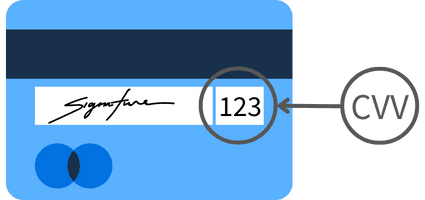
Why does my debit card not have a CVV?
If your debit card does not have a CVV security code, it’s likely because it is a traditional debit card – not a Visa Debit or Debit Mastercard – and cannot be used for online or over-the-phone purchases.
If you would like switch your card for one that you can use beyond in-store purchases, contact your bank to see about upgrading your card, or consider opening a new account that comes standard with a Debit Mastercard or Visa Debit card from the accounts listed here.
Can I use my Canadian debit card in the US?
Yes, you can use your debit card in the US just like you would use it in Canada as long as it has a magnetic stripe and PIN number. The main factor to keep in mind when using your Canadian debit card in the US is that you’ll be charged an exchange rate markup and foreign transaction fee of around 2% to 3% of the transaction value.
If you want to save money when using a Canadian debit card in the USA, consider opting for a debit card with no foreign transaction fees.
Why is my debit card declining when I have money?
If your debit card got declined, even though you have money in your account, it is often because your account has been frozen. Banks will freeze a chequing account if you’ve had too many incorrect attempts at entering your PIN number, or if there have been out-of-the-ordinary purchases from your account that the bank deems suspicious.
If you suspect your bank account has been frozen, it usually only takes a quick phone call with your bank to get it unfrozen. Read our full guide to reasons why your debit card may be declined to learn about other possibilities and how to fix the issues.
How old do you have to be to get a debit card?
Many banks allow youth to open a kids chequing account – and get a debit card – between the ages of 12 to 16 years old without a parent or guardian. If a parent or guardian can get involved, any child under 18 years old can open a bank account at the major banks in Canada, and in most cases, get a debit card linked to that account.
If you’re looking for a debit card for your child, compare debit cards for kids.
Features of a debit card
When you are looking for a bank account, the type of debit card that comes with it should play a role in your decision. You will usually be looking for a few different factors, including:
- No monthly fees. You can compare fee-free bank accounts to accounts that charge a monthly fee. If you have no need for extra services, you can opt for a fee-free account, meaning you won’t be charged a monthly fee to have a chequing or savings account.
- Third party logo. Having either Visa Debit or Debit Mastercard stamped on the card will increase the flexibility and benefits in spending that a debit card provides.
- One or multiple ATM networks for free. This is linked to the bank you choose, but you will want to find a debit card that has access to a large number of ATMs for free, especially if you travel often. For example, Scotiabank is a member of the Global ATM Alliance, meaning you can use the card to withdraw money free of charge from hundreds of ATMs worldwide.
- Contactless technology. Some debit cards enable you to make purchases using Near Field Communication (NFC) without having to swipe your card or enter a pin. Called “tap and go”, the feature lets you pay for items, costing around $150 or less, by holding your card close to a contactless debit/credit terminal.
- Fraud protection. You need to protect your debit card from theft and improper use. Make sure you have a unique PIN number set and keep your debit card safe. Banks recommend that you change your PIN frequently to increase protection.
- Other security measures. Check what security features your bank provides with your debit card. Your debit card should have secure PIN and chip technology. Also, check to see if you are responsible for unauthorized charges.
- Debit cards for students. As a student, you can receive a range of benefits from your debit card, including no monthly fee and occasional rewards.
Benefits of debit cards
Debit cards come with a number of benefits that make them a viable option:
- Easy to access cash. You can withdraw cash from just about anywhere without needing to visit a branch.
- No interest charges. You won’t have to worry about paying interest with debit cards since you can only spend the money that’s already in your account.
- Comes free with your bank account. You won’t pay an extra fee to get a debit card as it comes included with your chequing or savings account.
- Can be used to shop online. You may be able to use your card to shop online if it sports the Visa Debit or Debit Mastercard logo.
- Bad credit doesn’t matter. It’s easy to qualify for a debit card since you’re only spending your own money, even with a Visa Debit card or Debit Mastercard card.
What to watch out for
There are also a couple of drawbacks to consider before you sign up for a debit card:
- Potential account fees. The account your debit card is linked to may require you to pay a monthly fee.
- Overdrawing too much and being charged fees. If you are not keeping track of the money available in your bank account, you may accidentally go over the limit, resulting in bank fees.
- No access to credit. You can’t use debit cards to spend money that you don’t already have sitting in your bank account.
- Limited benefits and rewards. The majority of debit cards don’t come with benefits and rewards, so they may not be a good option if you want an all-inclusive card.
- Ensuring it doesn’t get lost or stolen. If your debit card is lost or stolen, you could have your funds withdrawn without your permission. Luckily, banks today have technology to identify unusual transactions and will often notify you of the transaction.
How to get a debit card
To get a debit card, you’ll need to open a bank account with a Canadian bank. Follow these steps to open an account and get a debit card:
- Compare bank accounts. Compare bank accounts from a number of providers to find the best debit card for your unique set of needs.
- Open the account. Open the bank account of your choice by visiting the provider’s website for the account you’re interested in. You can click the green “Go to site” button on this page to be securely directed to the bank’s application.
- Fill out application details. Fill out personal details such as your full name, address, email and phone number to start your application. You’ll also need to upload pictures of your ID during your application to prove your identity.
- Click submit. Once you’ve filled in the application and are ready to apply, click submit on your application.
- Wait for your card to arrive. When your application is approved, your provider should send your debit card out in the mail or allow you to pick it up at a branch location.
How to use a debit card
Using your debit card is simple. Just swipe or insert your card into the debit terminal, select the account you want to debit the money from, enter your 4- or 6-digit PIN number and press OK.
If your car is equipped with Tap & Go® or payWave, just hold your card near the terminal to pay – no PIN required.
Debit transactions in Canada are processed through a payment processor system like Moneris. Your merchant will also pay a fee for debit transactions. The amount of your purchase is deducted from the chequing or savings account associated with your card, whichever you selected
Tap payments are a type of contactless payments that work via NFC (Near Field Communication), where you simply need to hold your car close to the debit terminal to pay with your debit card. You can’t debit from your savings using tap. Instead, money is automatically debited from your primary chequing account.
What is Tap & Go® or payWave and how do I know my debit card has it?
Tap & Go® and payWave are both technology that allows you to securely pay for your purchases without having to swipe your debit card or enter your PIN. Instead, you simply tap or wave your debit card at the point of sale.
Take a look at your debit card and see if it has the payWave or Tap & Go® symbol on the front. The symbol consists of four curved lines and will likely be located on the right-hand side of the card, but this can differ between cards. If your card doesn’t have the symbol, you can call your bank to get a new card.
How to use a digital wallet debit card?
 You can add most debit cards in Canada to your phone’s digital wallet so you can pay with your debit card using Samsung Pay, Google Pay or Apply Pay. Your phone uses NFC so you simply need to select your debit card from your digital wallet and hold your phone near the debit terminal to make a payment.
You can add most debit cards in Canada to your phone’s digital wallet so you can pay with your debit card using Samsung Pay, Google Pay or Apply Pay. Your phone uses NFC so you simply need to select your debit card from your digital wallet and hold your phone near the debit terminal to make a payment.
In order to make purchases with your debit card using your smartphone’s digital wallet, you’ll need to first add your debit card to the digital wallet by following these steps:
- Open your digital wallet on your phone.
- Press the button to add a card to your wallet (usually a plus sign in the top right corner).
- Choose the debit card option from the list of card types.
- Agree to the terms and conditions.
- Enter your card details and save it. You may have the option to take a picture of your card so your phone can automatically fill in the details.
- You’ll often be asked to verify your card through your banking app, email, text or phone.
You can now use your debit card directly from your phone by tapping your phone at any terminal that accepts tap payments.
How do debit card works?
Here are some common questions about how debit cards in Canada work.
What is a debit card pin?
When paying for purchases at a store, you enter your PIN at the point of sale to authorize the transaction on your debit card. Some banks will provide you with a PIN, which you can use one time and then you will be prompted to enter a new PIN. Most banks recommend that you change your PIN regularly for security reasons.
Can I use my debit card to make purchases online?
The only way you can use your debit card to make purchases online is if you have a Visa Debit or a Debit Mastercard. These cards let you spend money out of your bank account to shop online. Check out some more frequently asked questions about online purchases below:
- Which online stores accept debit cards? Most big box retailers and major online stores accept debit cards. You simply need to input your Visa Debit or Debit Mastercard card details into your online account in the same way you would with a credit card.
- Can I use a debit card on Amazon? You can use a Visa Debit or Debit Mastercard to shop with Amazon in most cases. However, you won’t be able to make purchases with Amazon if you have a normal debit card that isn’t linked to a credit card provider.
- Can I use a debit card for PayPal? Much like with Amazon, you can use a Visa Debit or Debit Mastercard to pay off your PayPal balance. You can also link your PayPal account directly to your bank account if you don’t want to link it to your debit card. Explore more about how to use your debit card with PayPal in our full guide here.
Can I use my debit card internationally?
Most banks will let you use your debit card overseas but it will cost you more than what you’ll have to pay to spend money in Canada. Find the answers to frequently asked questions about using your debit card internationally below:
- What will I have to pay to spend money overseas? You’ll often have to pay high fees for making ATM withdrawals internationally unless your bank account specifies otherwise. You may also need to pay foreign exchange fees between 1% and 3% alongside a margin on the exchange rate to switch between currencies.
- Can I use my debit card in the USA? It’s possible to use your debit card in the USA if you’re traveling there in person. Some Visa Debit or Debit Mastercard cards will also let you spend money online in the US. For frequent cross-border spending, you may want to consider a US currency account to cut down on fees.
- Can I use my debit card in Europe? You can use your debit card in Europe at certain stores and ATMs. Just be aware that you’ll typically pay high fees and expensive currency exchange rates unless you sign up for a travel debit or a bank account that deals exclusively in Euros.
Debit card fraud: is your money at risk?
Like any financial product, debit cards come with the risk of being exploited by scammers. But there are steps you can take to protect your money from potential threats.
What is debit card fraud?
Debit card fraud occurs when someone else obtains your debit card details and makes transactions on your card without you knowing. If you report a fraudulent transaction on your card, your bank should deactivate your card immediately in order to prevent the person from making more transactions. An investigation will likely take place to help retrieve or replace your money.
You should always check your debit card statement to make sure all of the transactions listed are legitimate. This will help you identify any unusual activity.
Lost or stolen cards
If your card is lost or stolen, let your bank know straight away, even if you’re travelling overseas. In most cases, your bank will immediately cancel your card and will send you a replacement card as soon as possible.
Can I get a refund on fraudulent transactions?
This depends on your bank and the situation. Many of the bigger banks offer a 100% money-back guarantee on fraudulent transactions if you comply with the card’s conditions of use. For more information, speak to your financial institution.
What is the difference between a debit card and a credit card?
There are a number of ways that debit cards differ from credit cards. The most important difference relates to how you access funds. Debit cards only let you access cash that you’ve got saved up in your account. Credit cards let you “borrow” money that you eventually have to pay back with interest.
Other differences between debit and credit cards include:
- Annual fees. You won’t pay any fees to take out a debit card, though you may have to pay for the account your card is linked to. You’ll typically have to pay an annual fee for a credit card unless you opt for a fee-free card with fewer rewards and benefits.
- Rewards. Most debit cards won’t let you earn rewards when you spend money (with a few exceptions, such as the Scotiabank SCENE debit card). The majority of credit cards let you earn points or cash back on purchases.
- Benefits. It’s fairly unusual for a debit card to offer any type of benefits. Credit cards often come with perks such as travel insurance, roadside assistance, mobile device protection and more.
What happens if I spend too much on my debit card?
If you spend too much money on your debit card, or overdraw, it means you’ve used your debit card when your account balance was zero or really low, and you spent more than the amount you had in your account, resulting in a negative balance. You may be charged a non-sufficient funds (NSF) fee (usually around $50) as a penalty for dipping into a negative balance.
The only way you can avoid an NSF fee is if you have overdraft protection on your account. This feature allows the transaction to occur even if you happen to go into the red because a bill comes out early or you have an unexpected expense.
How does overdraft protection work on my account?
If your account has overdraft protection, your transaction will go through even when your balance is $0. However, this feature may come with a fee and interest, which is why it’s important to always ensure you have enough money in your account for automatic payments, such as your monthly bills.
How to compare debit cards in Canada
You can compare debit cards and the bank accounts they’re attached to by looking at the following features:
- Monthly fees. While debit cards are usually fee-free, you may need to pay for the account they’re attached to. Make sure you get the right bank account for your needs with a monthly fee you can afford.
- Ability to shop online. Some cards are linked to a credit card provider while others aren’t. You may want to look for a Visa Debit or Debit Mastercard if you intend to use your debit card to make purchases online.
- Free ATM withdrawals. Most large banks and online providers let you withdraw cash from certain ATMs for free. Search for a bank with a large ATM network to make sure you don’t lose money on unnecessary withdrawal fees.
- Contactless technology. Some debit cards enable you to make purchases without having to swipe your card or enter a pin. Look for a card that’s enabled with tap and go technology to save time when you pay at the till.
- Security measures. Find out which security features your bank provides with your debit card. Your debit card should have secure PIN and chip technology along with fraud protection to cover you against unauthorized charges on your account.
Compare accounts with debit cards
In both Q1 and Q2 of 2023, approximately 1 in 10 Canadians were looking to open a chequing account — the predominant day-to-day bank account that includes a debit card.
Dive deeper into debit cards from specific banks in these guides:
Bottom line
Debit cards let you access your savings or chequing account on the go. You can use them to withdraw money from ATMs or to make purchases in store. You can also use them to make purchases online if you have a Visa Debit or Debit Mastercard. While most Canadians have a debit card, many prefer to make purchases using a credit card. This is because credit cards tend to offer more rewards and benefits than debit cards.
Debit cards in Canada FAQs
More banking guides from our experts
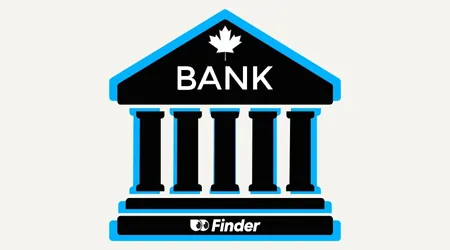
Banking statistics and trends in Canada for 2025
Explore key banking statistics and figures from the Finder: Consumer Sentiment Survey January 2025.
Read more…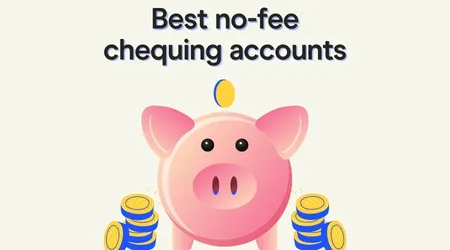
Best free (no-fee) chequing accounts in Canada
Compare the features of 8 of the best no-fee chequing accounts in Canada, and find out how to avoid transaction fees.
Read more…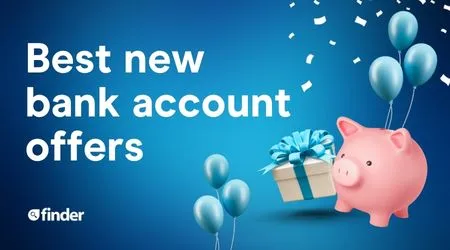
16 best new bank account offers for April 2025
Earn cash, rewards points, bonus interest rates and more with these new bank account offers and promotions.
Read more…
Best youth bank accounts in Canada
Learn about the different types of bank accounts for your teenager and how to choose the right one.
Read more…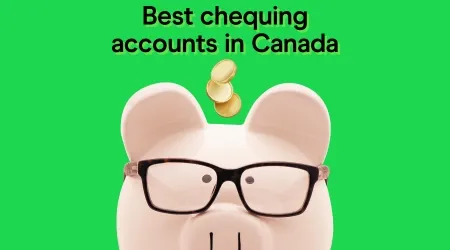
Best chequing account in Canada for 2025
Compare chequing accounts and learn about our top picks. Compare different features and see which one is right for you.
Read more…
Open a bank account online in Canada in 5 easy steps
Compare and open a bank account online in Canada in as little as 5 minutes. Learn what you need to apply and how to get started today.
Read more…Read more on Chequing Accounts
-
Best virtual debit cards in Canada
Your guide to the best virtual debit cards in Canada, how they work, and their pros and cons.
-
Wise Card review
Get competitive exchange rates and pay no foreign transaction fees when you spend money internationally with this fee-free debit card.
-
Scotiabank Debit Card Review
Use this versatile Scotiabank Debit Card to earn points and make purchases online.
-
RBC debit card review
Apply for a debit card with this Big Five bank to make purchases online or in-store directly from your bank account.
-
How to use a debit card online
It’s a straightforward and convenient process to use your debit card online, but paying with a credit card may be safer.
-
Debit card fraud: How to get a refund on a fraudulent transaction
If you’ve fallen victim to debit card fraud, you may be eligible to receive a refund. Learn more in our comprehensive guide to debit card fraud.
-
Top 14 reasons your debit card was declined
Take preventive measures to avoid having to worry about your debit card being declined.
-
3 best international debit cards for travelling overseas
Make sure you have one of these debit cards before you travel overseas.
-
PayPal and your debit card
Linking your debit and credit card to your PayPal account can save you time when shopping online. Here’s how.
-
Debit card service fees
Convenience fees can apply to debit card transactions as well as credit card payments, but only a small number of select merchants can legally charge them in Canada.

